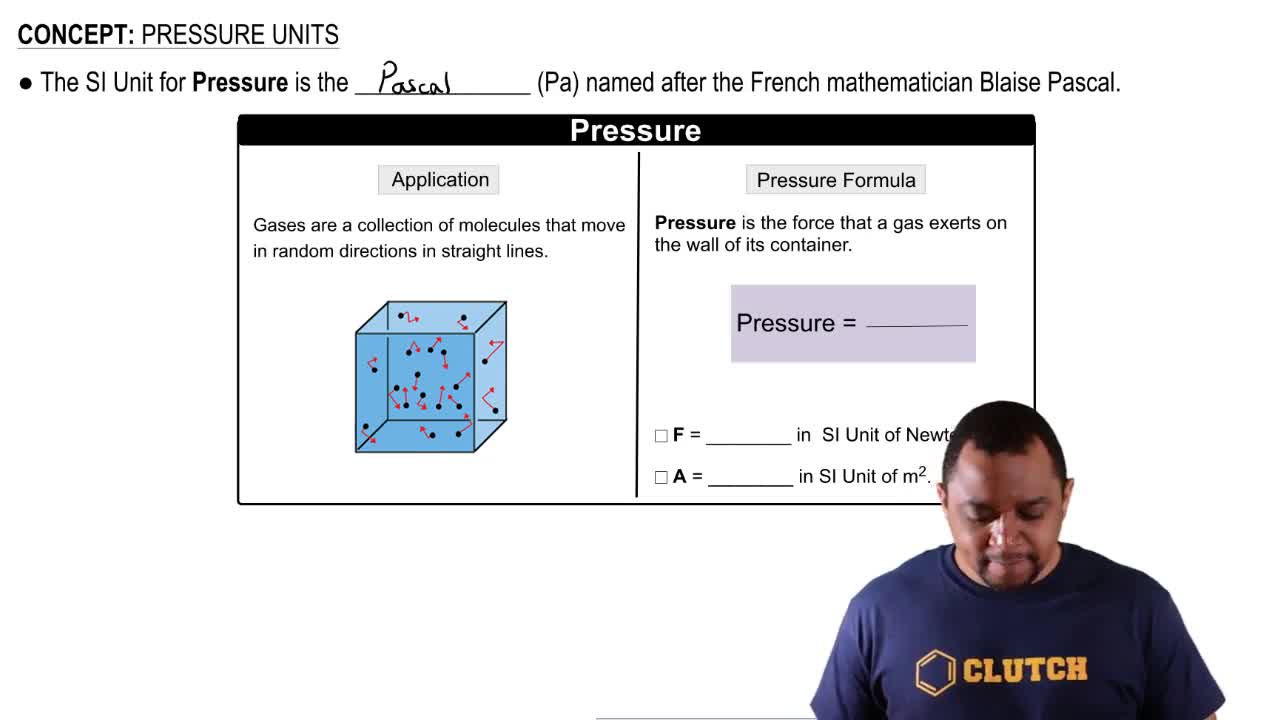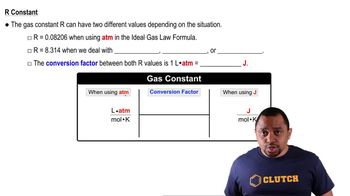Here are the essential concepts you must grasp in order to answer the question correctly.
Ideal Gas Law
The Ideal Gas Law is a fundamental equation in chemistry that relates the pressure, volume, temperature, and number of moles of an ideal gas. It is expressed as PV = nRT, where P is pressure, V is volume, n is the number of moles, R is the ideal gas constant, and T is temperature in Kelvin. Understanding this law is essential for manipulating gas properties and converting between different units of pressure.
Recommended video:
Units of Pressure
Pressure can be measured in various units, including atmospheres (atm), bars, and pascals (Pa). One bar is defined as 100,000 pascals, and 1 atm is approximately equal to 1.01325 bars. When converting the ideal gas constant R to different units, it is crucial to understand these relationships to ensure accurate calculations and conversions.
Recommended video:
Ideal Gas Constant (R)
The ideal gas constant R is a proportionality constant in the Ideal Gas Law that relates the energy scale to the temperature scale. Its value varies depending on the units used for pressure, volume, and temperature. For example, R = 0.08314 L·bar/(mol·K) when pressure is measured in bars, which is necessary for calculations involving gases under different conditions.
Recommended video:
 Verified step by step guidance
Verified step by step guidance


